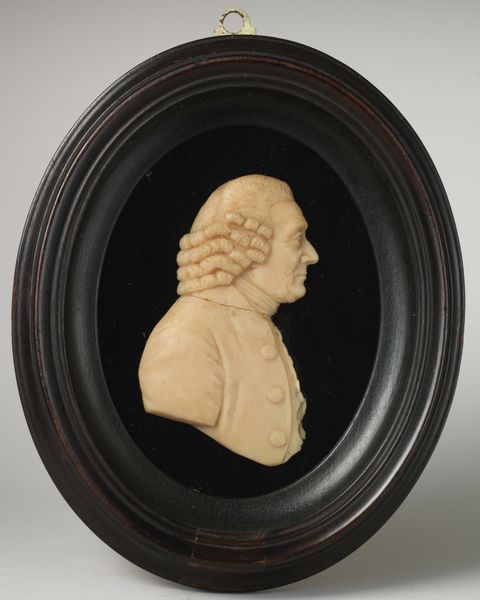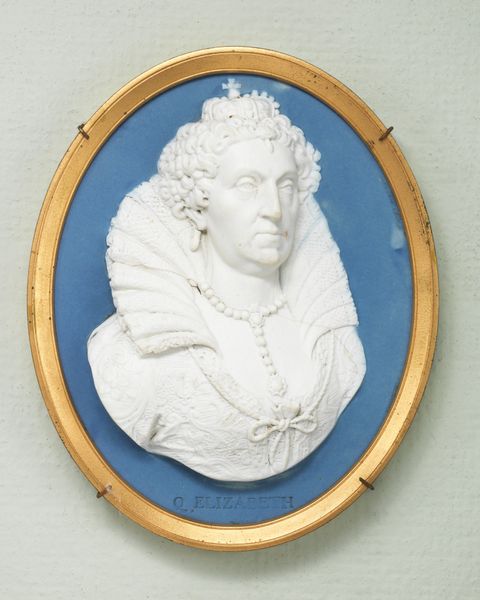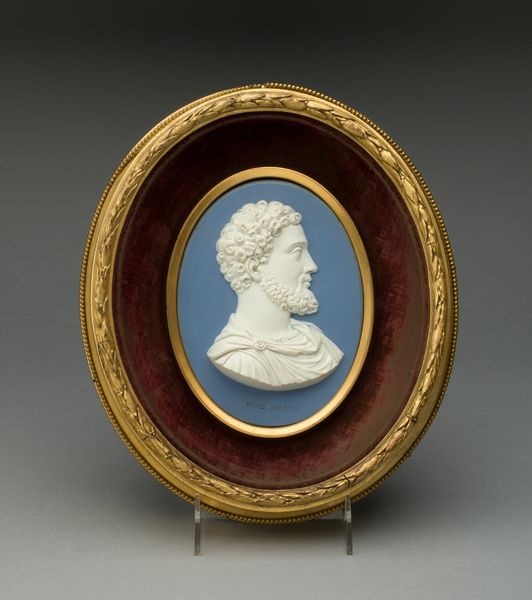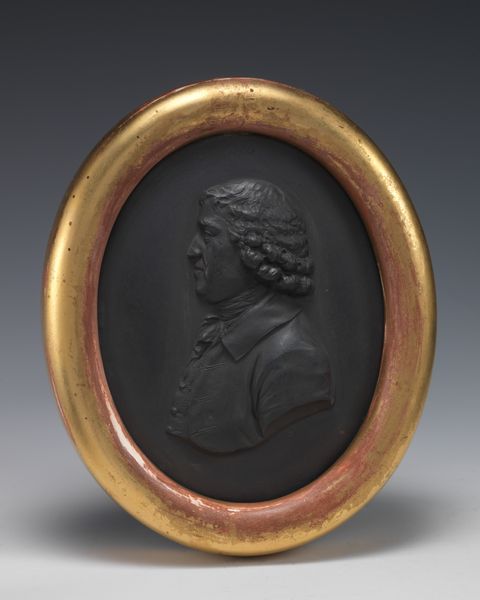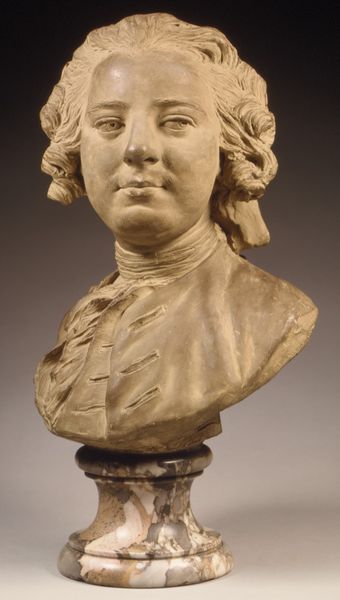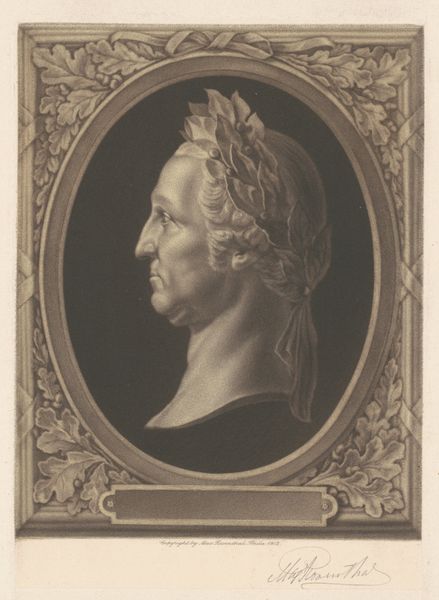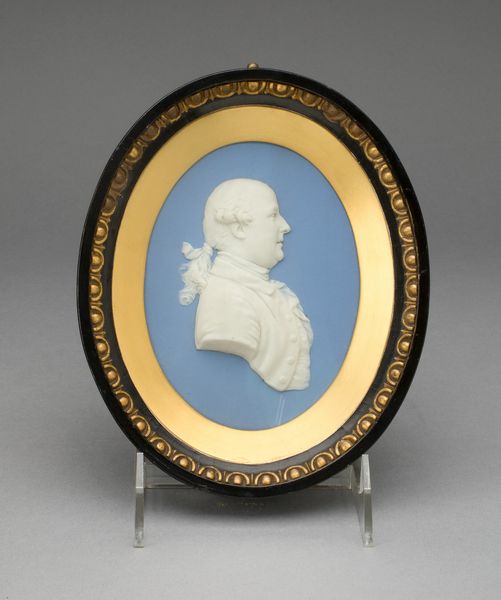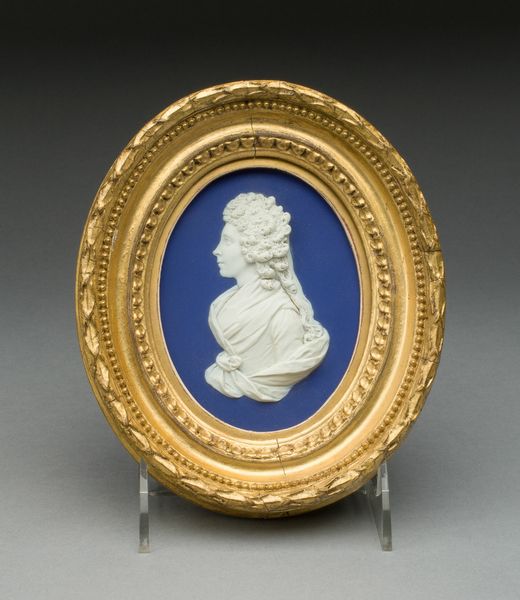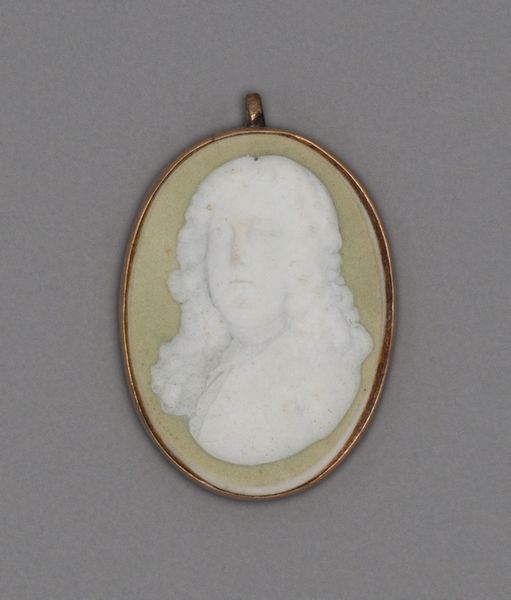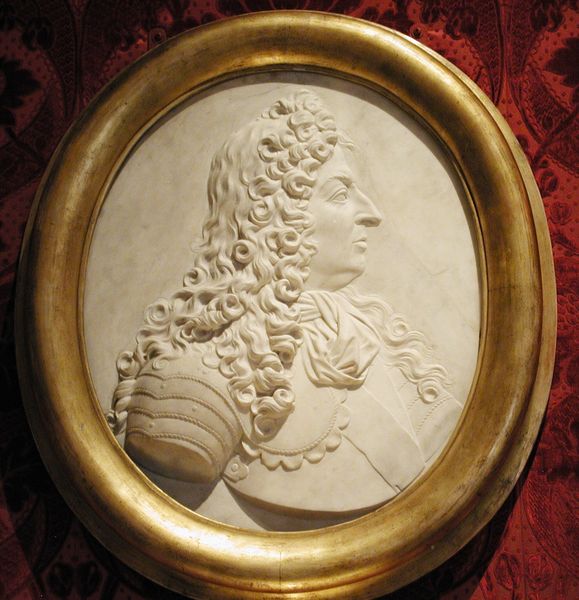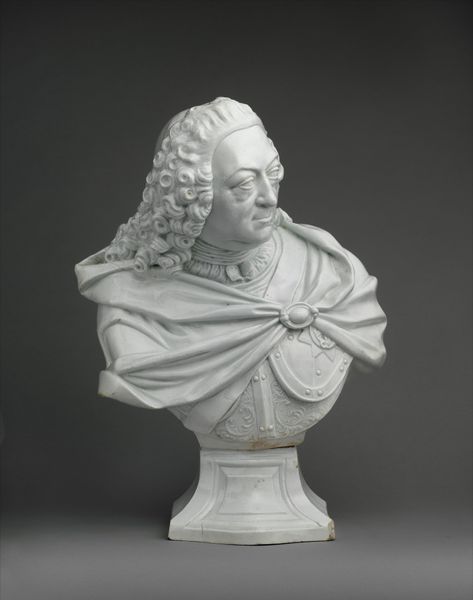
relief, sculpture, marble
#
portrait
#
neoclacissism
#
self-portrait
#
sculpture
#
relief
#
sculpture
#
marble
Dimensions: height 39.6 cm, width 34.0 cm, depth 7.2 cm
Copyright: Rijks Museum: Open Domain
Petrus Camper made this self-portrait in the late eighteenth century using terracotta, a medium favored for its ability to capture fine detail and texture. This portrait offers a glimpse into the world of Enlightenment science and its relationship to artistic representation. Camper was a renowned anatomist and physician in the Netherlands. His theories on facial angle influenced both scientific and aesthetic discourses of the time. The profile view, set within an oval frame, evokes the tradition of classical portraiture, associating Camper with intellectual and artistic achievement. The choice of terracotta lends a sense of immediacy to the image, suggesting a directness and authenticity that aligns with the empirical spirit of the Enlightenment. To fully understand this work, we would want to consult period scientific publications, art treatises, and biographical sources that shed light on Camper's intellectual milieu and the social values that shaped his self-image.
Comments
rijksmuseum about 2 years ago
⋮
Petrus Camper was an internationally renowned physician with a profound interest in the theory and practice of art. He published on a broad range of subjects, including orangutans, inguinal hernias, megaliths, the cattle plague and the croaking of frogs. After holding a professorship at Franeker (in Friesland), he settled in Amsterdam, where he became a patron of the Drawing Academy and lectured at the Felix Meritis Society.
Join the conversation
Join millions of artists and users on Artera today and experience the ultimate creative platform.
